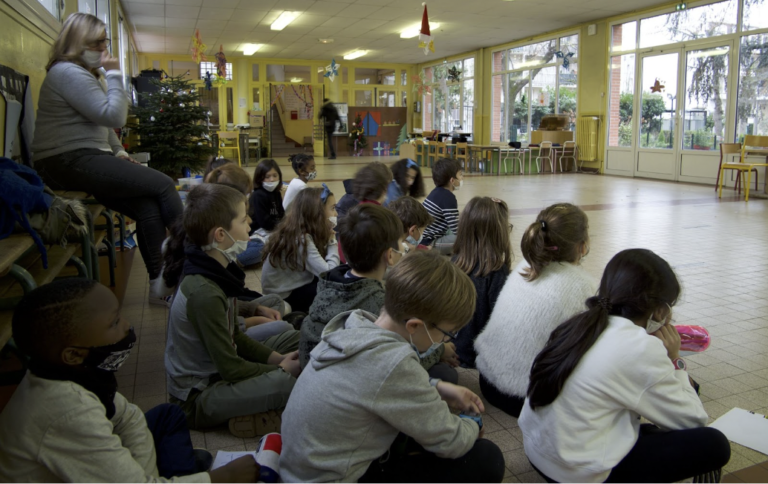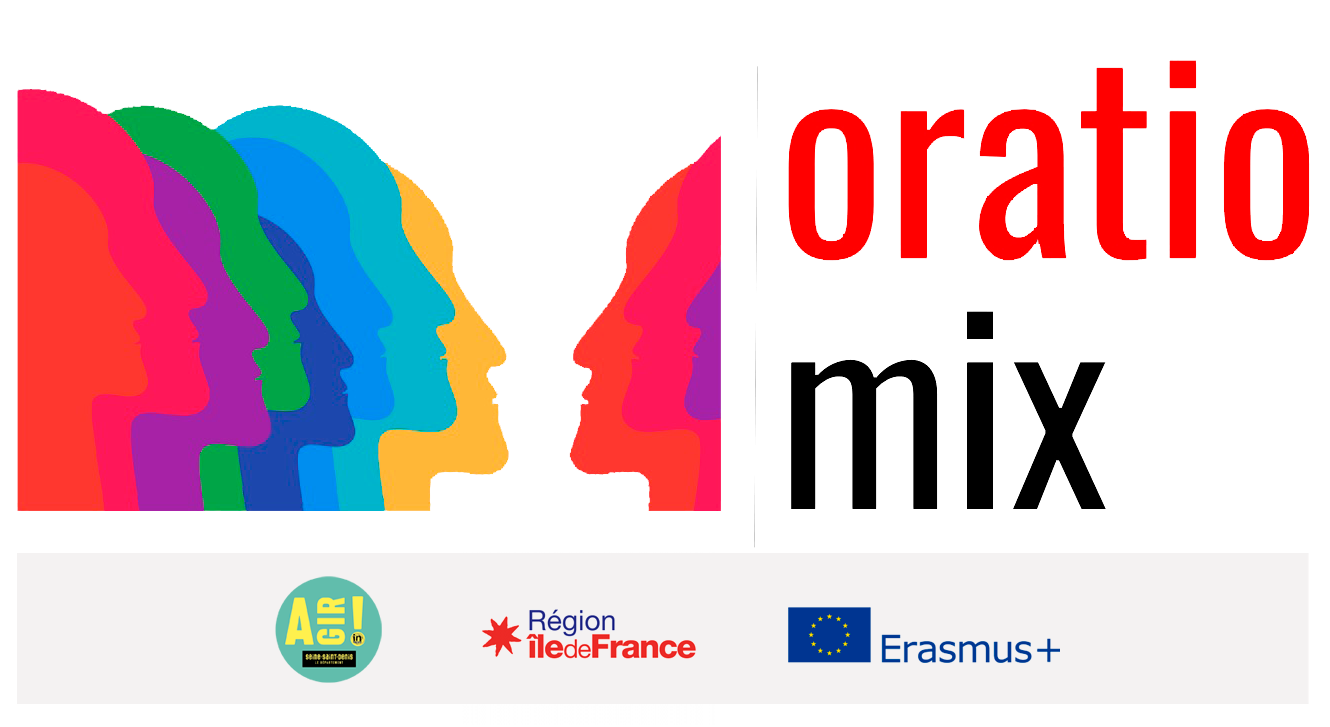Workshop 7 : Staging part 2
Implementation: what do we need?
– A workspace: the room provided must be large enough and arranged in such a way that it can accommodate all participants and allow freedom of movement, the workshop requiring physical commitment.
The participants
Primary students between 7 and 10 years, the group not exceeding 30 students
Speaker
School teacher, educator, theatre teacher
Objectives of this workshop
work the characters
start the layout
Time required
60-90 minutes
We recommend 60 minutes for 7-8 year olds and 90 minutes for 9-10 year olds.
Implementation
This workshop uses body expression and theatre techniques
Finality
At the end of the session, children will have:
exercised their ability to improvise
improved their understanding of space
1. Start session
The clap
In a circle, the children pass a clap to their neighbor. e (one claps in his hands) while making the circle. For the clap to pass, students must look each other in the eye before clapping their hands!
2. Warm up
- You can take the instructions seen last time (walk, stop, youpla, rhythms, numbers, environments) to see the evolution of students from one session to another.
- We walk in space like the different characters created by the students.
3. Improvisation
- We separate the class into 2 groups: on one side those who will move as the main character and on the other those who will do as the friend. e du.de la.héro.ïne. We start the walk in space and then we ask the students to meet: what do they do together? A. e knight. e who rides on the back of his horse? A. e elf who transforms the icy breath of his friend. e the unicorn into a rainbow! They must use the characteristic elements of their character and the established relationship with the other.
- Same exercise: this time one group is the. a hero.in and the other is the opponent!
Table of the beginning of the story: as in session #2 on representations, the students make the picture of the place imagined for their story: if it is a forest, you need trees, mushrooms, stones, perhaps the cave where the character lives, flowers… - The tables of the initial situation, the action and the final situation are then produced.
We take the picture of the place and integrate the characters one by one. We make live the different interactions with the characters. - For the students who make up the picture of the place, we accompany their evolution: if we are in a forest, the wind can blow in the leaves of the trees; if a dragon blows fire, the forest can be burned…

4. End of a ritual
Clapping
The. a leader stands opposite the other members of the group in order to be seen by all. He/she positions his arms horizontally and will clap his hands above his head. The others must imitate him at his/her pace. Then, little by little, he.elle will accelerate until reaching applause.
